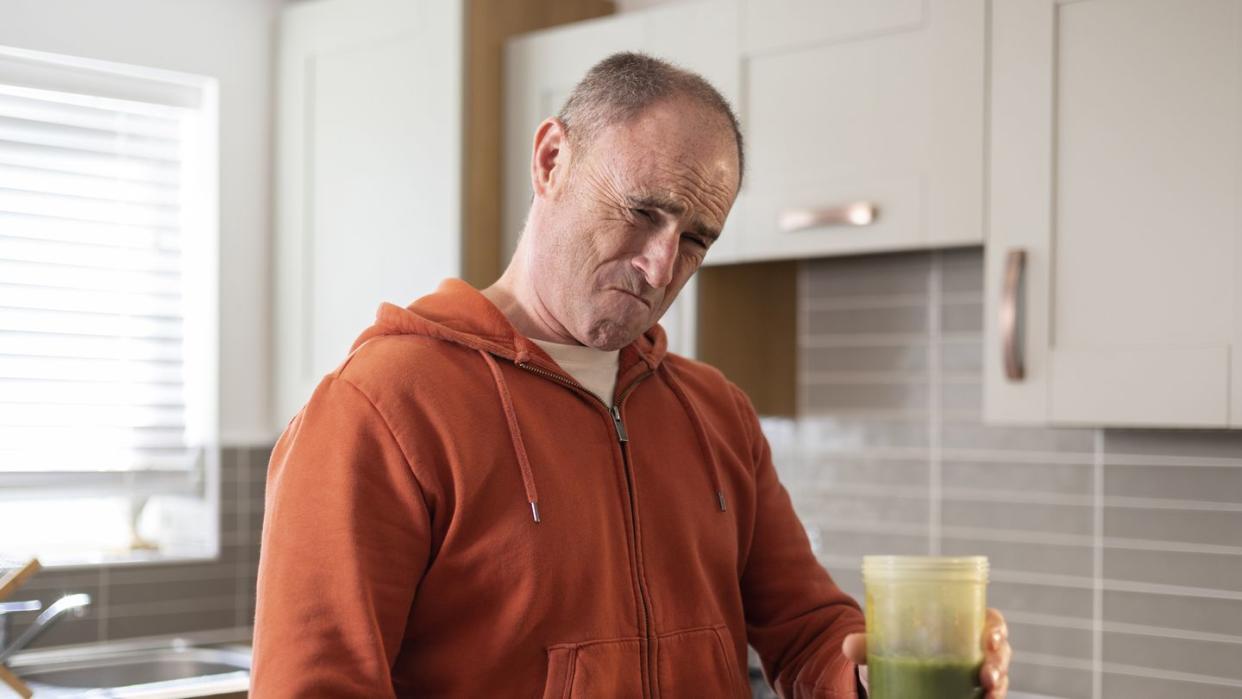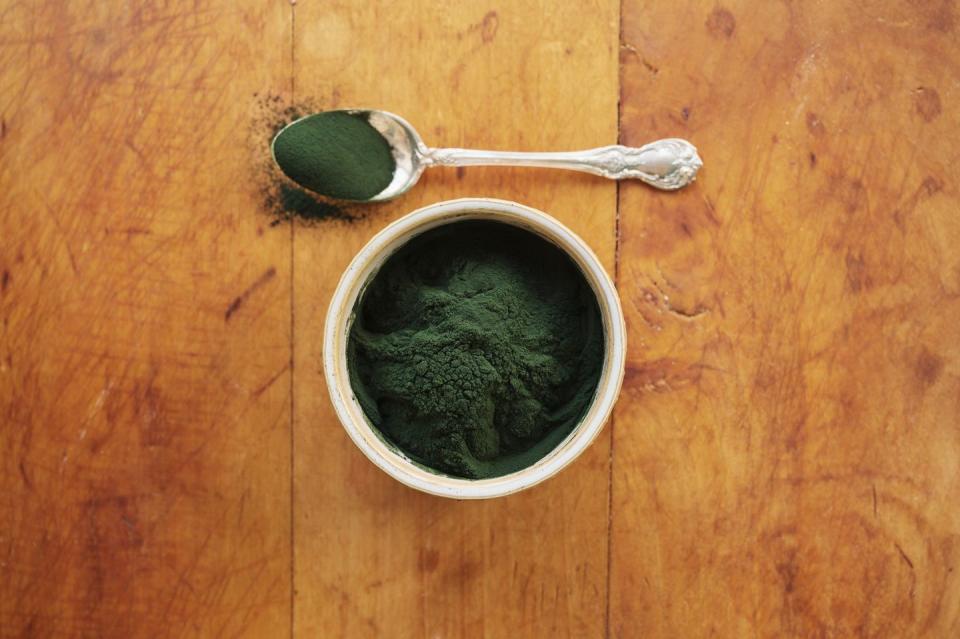Dietitians Explain the Science Behind Spirulina Supplements

ELEMENTARY SCHOOL HEALTH class taught us the importance of getting our greens in. That meant having a side of kale, arugula, or spinach with dinner. Swapping in spirulina supplements means you can add algae to that rotation, too.
Spirulina is a bright greenish-blue powder that is made of dried, edible algae. While eating algae doesn't sound all that appealing, the supplement has been touted for its health benefits for thousands of years. Even NASA gives the supplement to astronauts in space. If it's legit enough for NASA, should you be adding it into your diet, too?
Experts provide the lowdown on spirulina, below.
What is spirulina?
Spirulina is an edible blue green algae that dates back billions of years. It's considered a superfood for its high protein and micronutrient content, and has been used by humans since ancient times. “It was consumed by the ancient Aztecs,” says Joanne Keaveney, R.D., at Boston Medical Center.
The algea is rich in protein, vitamins and minerals such as vitamin E, B complex vitamins, copper, iron, selenium and essential fatty acids—all of which our bodies need for general bodily functions.
Because spirulina lacks cellulose wall cells, it is is easily absorbed in the human body with approximately 86% digestibility, says Katrina Hartog, R.D., Director of Clinical Nutrition at Mount Sinai Morningside and Mount Sinai West in NYC. “However, the nutrition composition of spirulina is affected by environmental factors such as pH, light, salinity of water, as well as temperature."

What are the health benefits of spirulina?
Spirulina's vitamin, mineral, and protein content may be promising for certain health benefits, but there's a lot of work to be done to prove its effect.
It is often touted for its protein content. Spirulina is made up of about 63% amino acid proteins, depending on how it's grown, according to Hartog. That's a pretty high percentage for a plant (for comparison, peas contain 20 to 25 percent protein, and are typically the main protein source in plant-based protein powders). But, with only 4 grams of protein per tablespoon, “you would have to take large quantities to see the effect of [the] protein,” Hartog says. So, it definitely shouldn't be a substitution for protein powders.
Several studies suggest that spirulina may boost the immune system by increasing the body's production of antibodies, aiding in warding off germs. It's also been seen to help build muscle because of its high protein content, and even help protect against allergic reactions. But, all of these findings are based off animal studies—without more studies on humans, there is little proof that spirulina supports people in this way, Keaveney says.
One 2020 study in Open Heart Journal on animals and humans showed increased weight loss when supplementing with spirulina. “When 2 grams of spirulina per day with a calorie-restricted diet versus placebo was provided to individuals with obesity, the spirulina group had significantly lower body weight, waist circumference, body fat, and overall body mass index,” says Hertog. That's promising, but the study is rather small, and more research needs to be done to confirm it's weight loss effects.
In general, “the positive health effects of spirulina are promising but larger, human studies are needed,” says Hartog.
What are potential risks of taking spirulina?
There are some disadvantages to taking spirulina that people should be mindful of, says Hartog.
Spirulina grows in both fresh and saltwater, but supplement sourcing of the superfood isn’t always clear, depending on the brand you buy it from. That's one of the big scares of taking the supplement, Keaveney says. “I don’t think that a lot of people who take spirulina know where it comes from, and I think that’s important to know. Was it made in a lab? Was it made in the ocean? In a pond? In your backyard pool, or in a swamp?”
And, since it is a dietary supplement, spirulina is not regulated by the Food & Drug Administration—meaning, no agency is regulating where the supplement is sourced from, either. There is no guarantee that the product you buy will be contaminant-free, or contain the amount of spirulina it says on the label, says Hartog. That being said, the FDA does categorize spirulina as generally recognized as safe.
“The biggest risk [in taking a spirulina supple] is heavy metals,” says Keaveney. Toxic substances, or microcystins, such as mercury, lead, arsenic and other pollutants have been found in wild-crafted spirulina. In high amounts, some of these toxins may stress or damage the liver. Some noted side effects by people who have taken spirulina, Keaveney says, include increased sweating, insomnia, muscle pain, diarrhea and headaches. Because of the toxin risk, she recommends those pregnant and breastfeeding avoid spirulina.
It also contains high amounts of the amino acid phenylalanine, so spirulina shouldn’t be consumed by people with phenylketonuria (PKU), a rare disorder that causes this amino acid to build up in the body.
While some research shows that spirulina can support immune system function, this could actually worsen symptoms in people with auto-immune diseases like lupus, multiple sclerosis, or arthritis, Keaveney says.
Talk to your doctor before adding spirulina to your diet, especially if you have an auto-immune condition.
How to Take Spirulina
Keaveney recommends getting protein and antioxidants from a variety of whole food sources, first. Then, if you're looking to try spirulina, and have cleared it with your doctor, take 1 gram of a powder supplement per day, says Keaveney. Don't exceed 20 grams per day. More research is needed for dosage, but this amount is generally recognized as safe. Spirulina can be consumed before, with, or between meals. When buying a supplement, look for USP or NSF certifications on supplement bottles for a stamp of purity.
“Spirulina powder has a sea-vegetable flavor and is certainly an acquired taste,” says Hartog, who suggests mixing the powder in fruit smoothies, yogurt, or oatmeal. “You can also incorporate spirulina powder into baked goods such as bread or cookies.”
You Might Also Like

